Current-Raft Rodeo

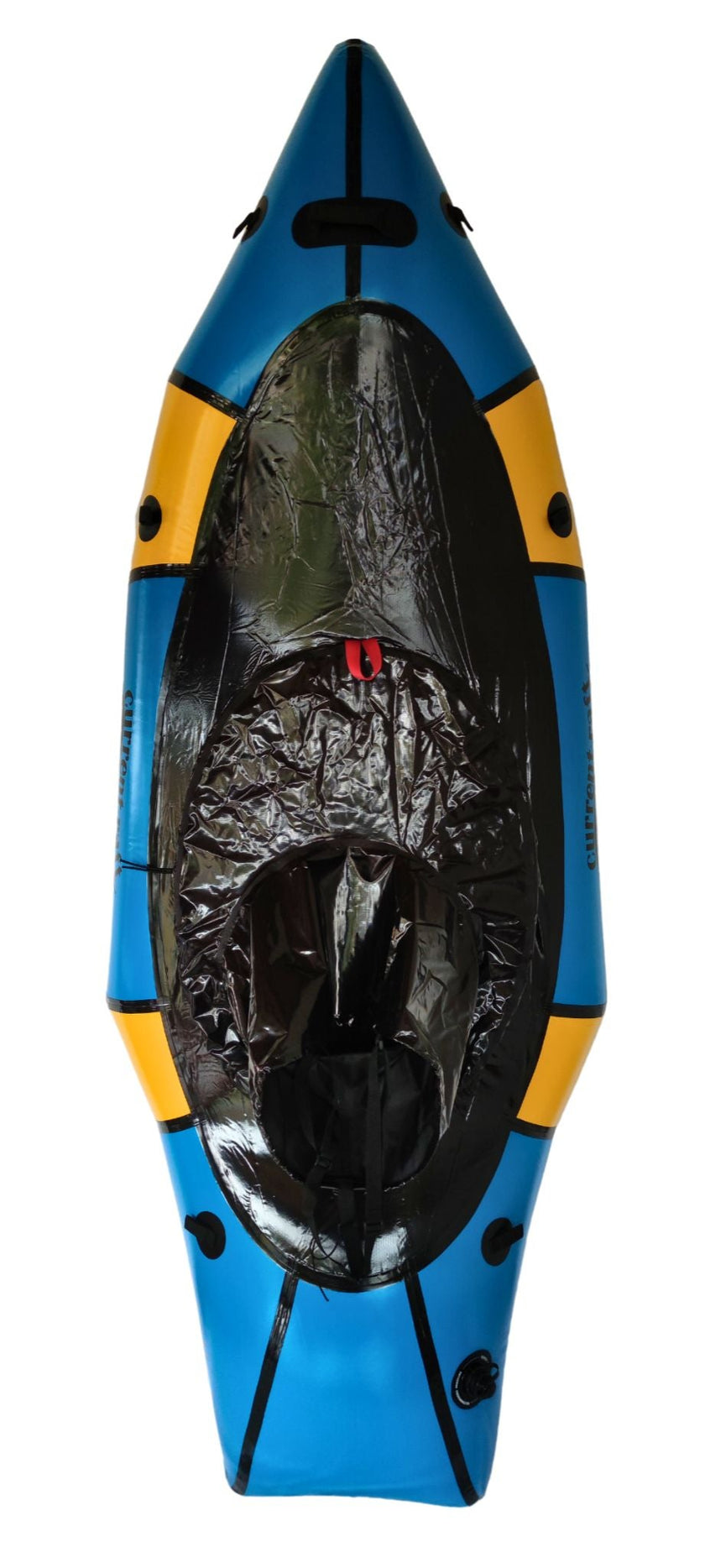
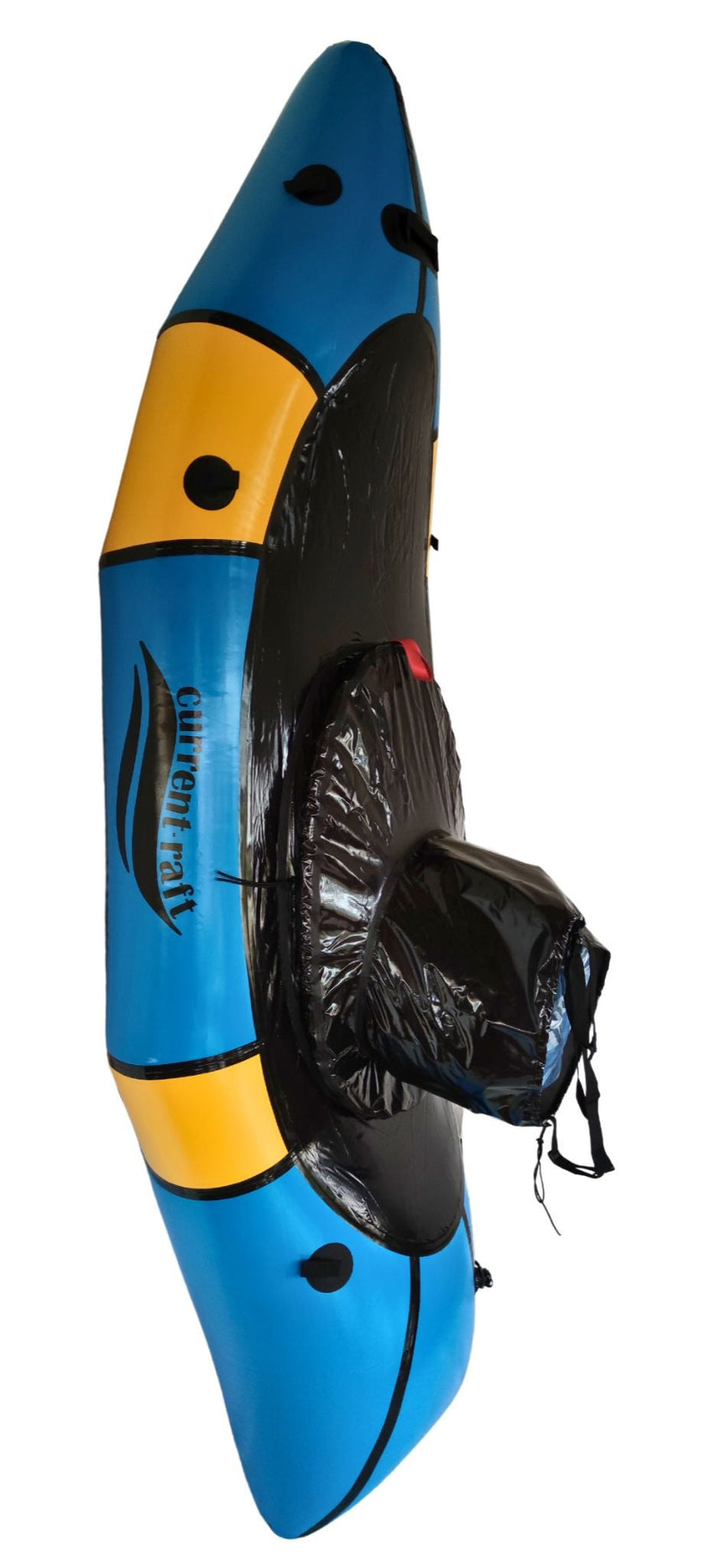
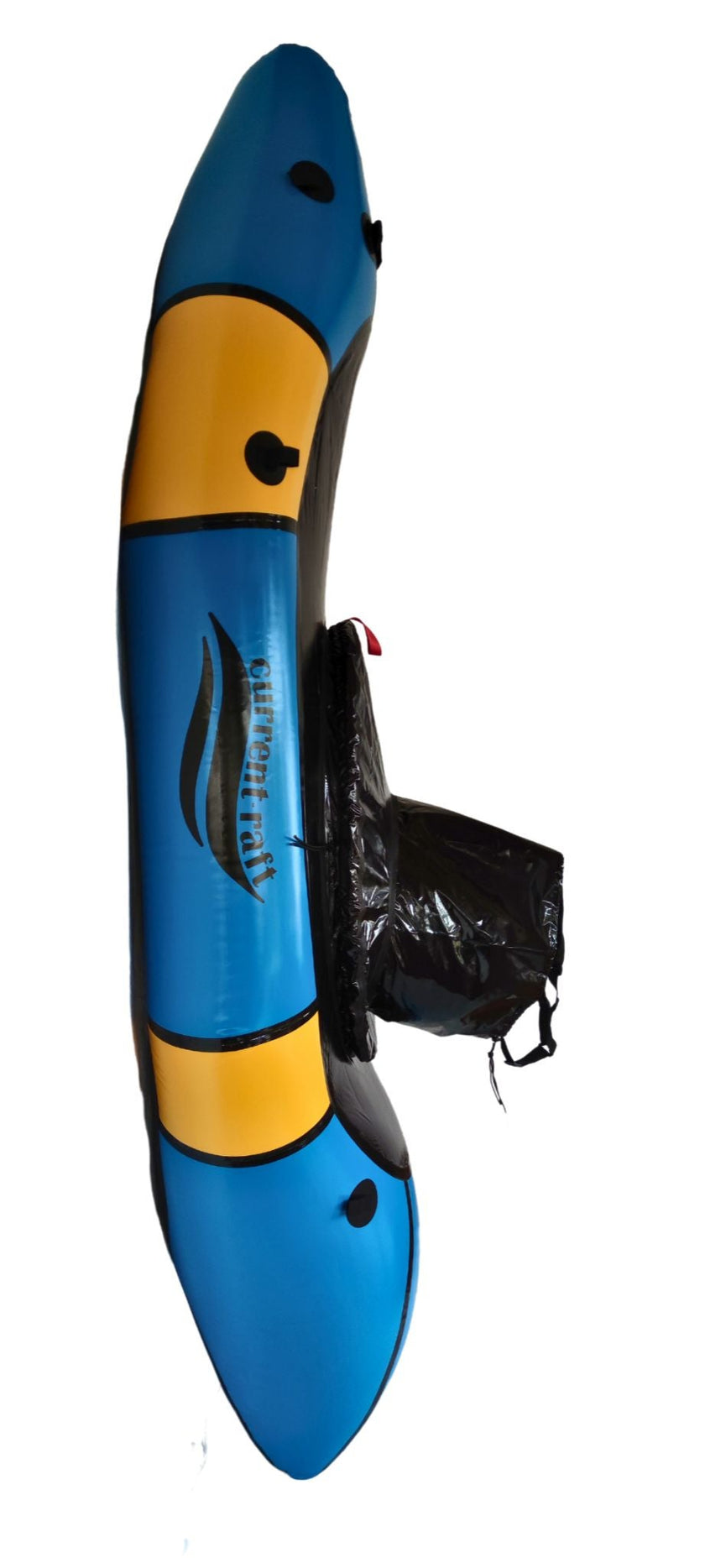
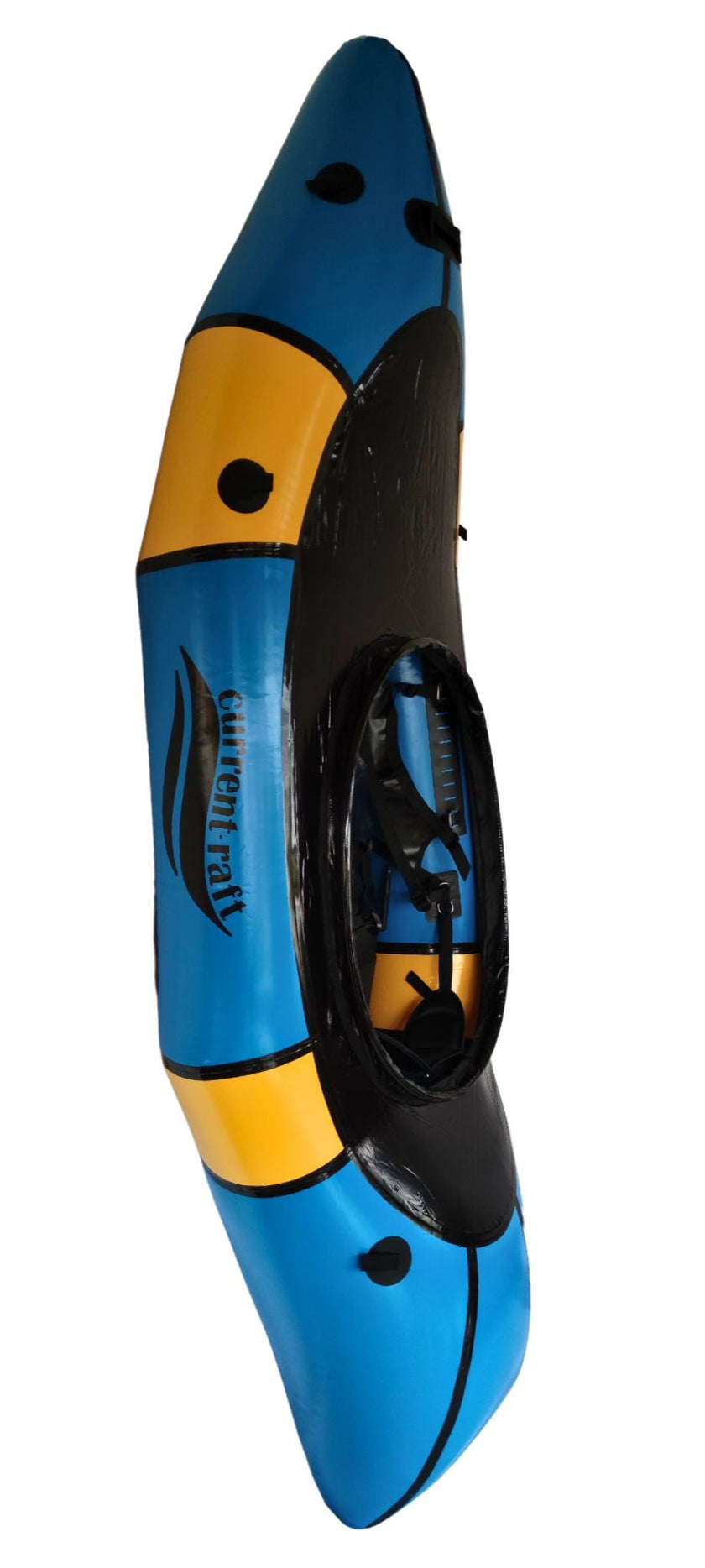
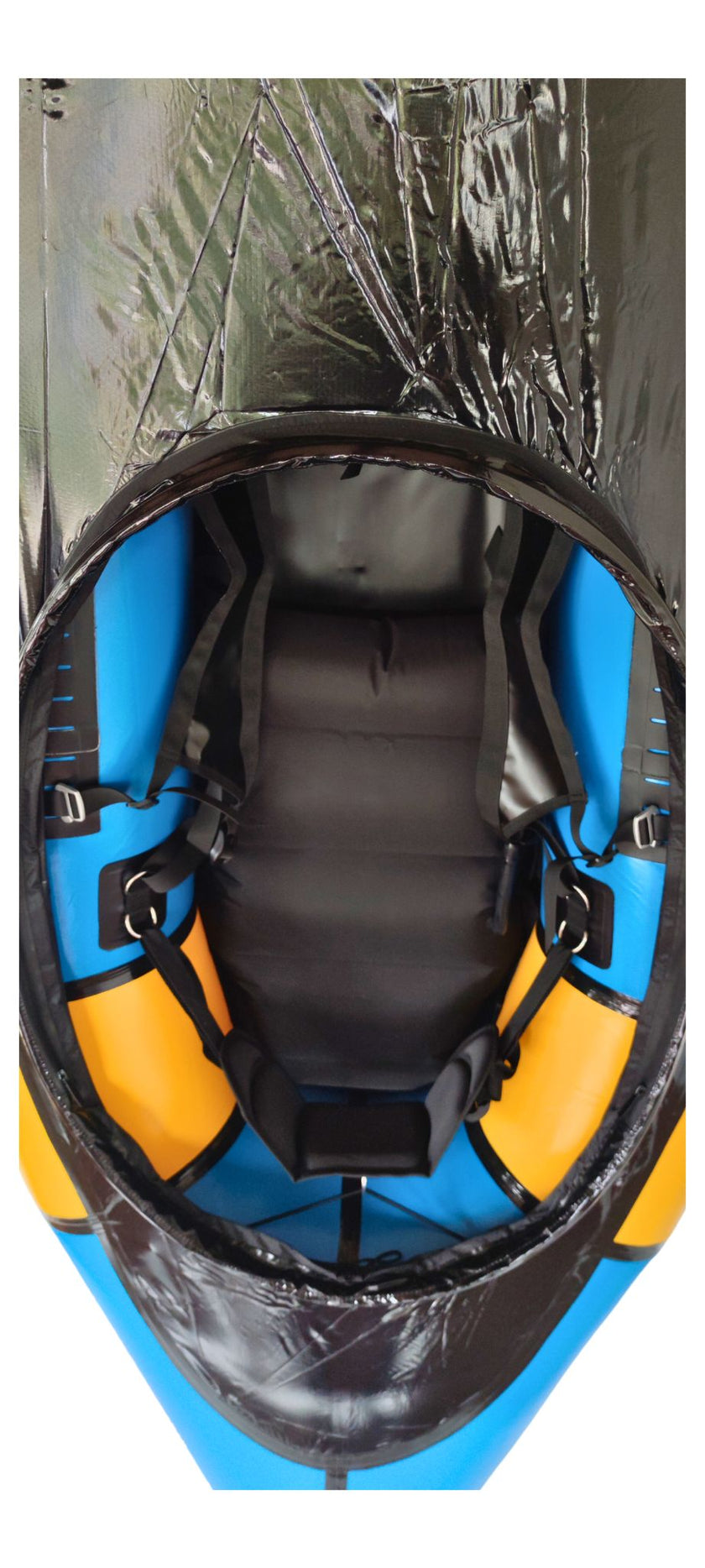
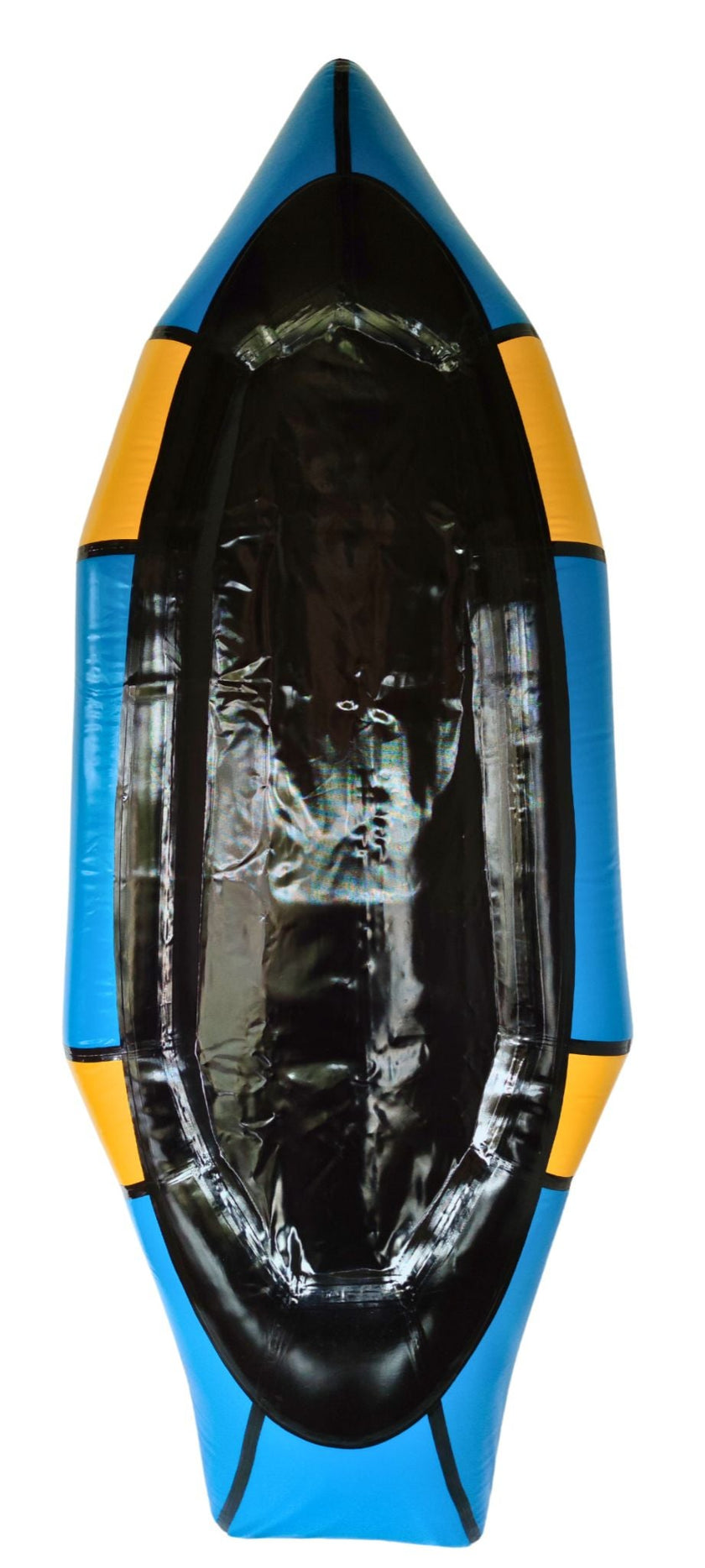
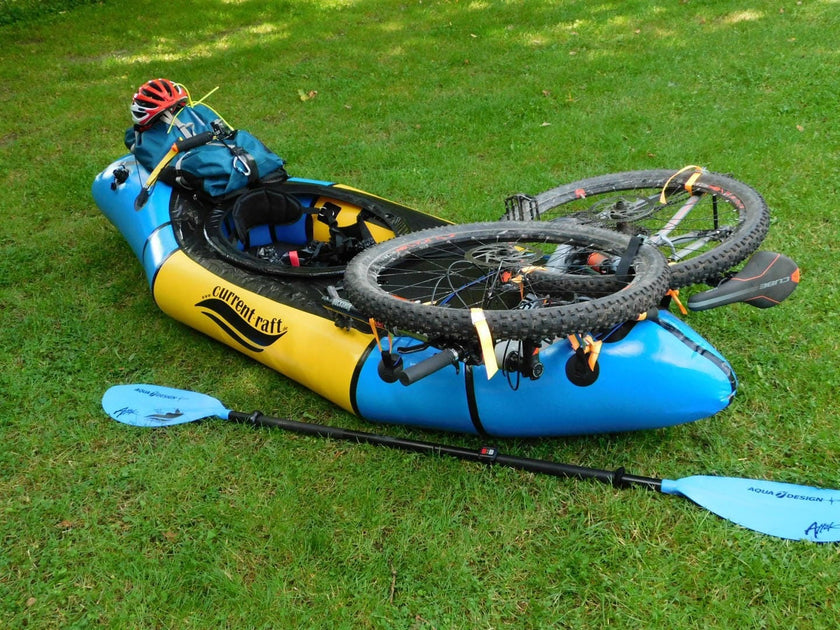
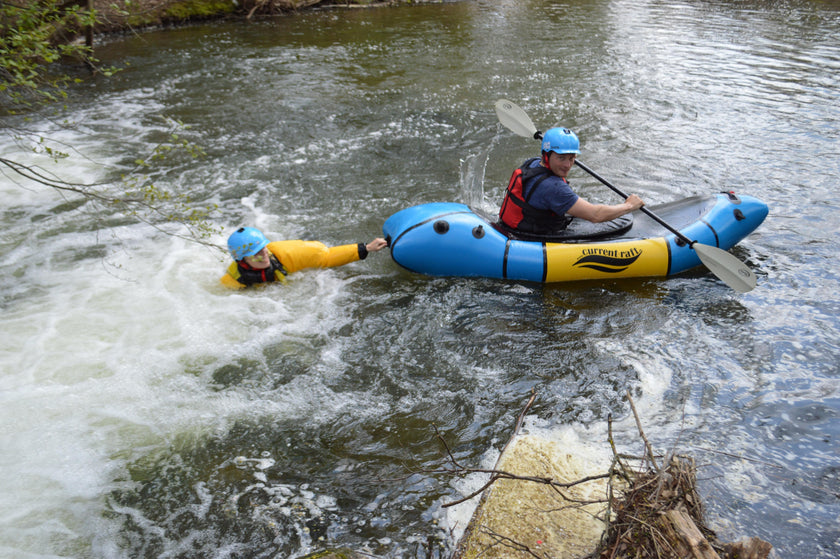
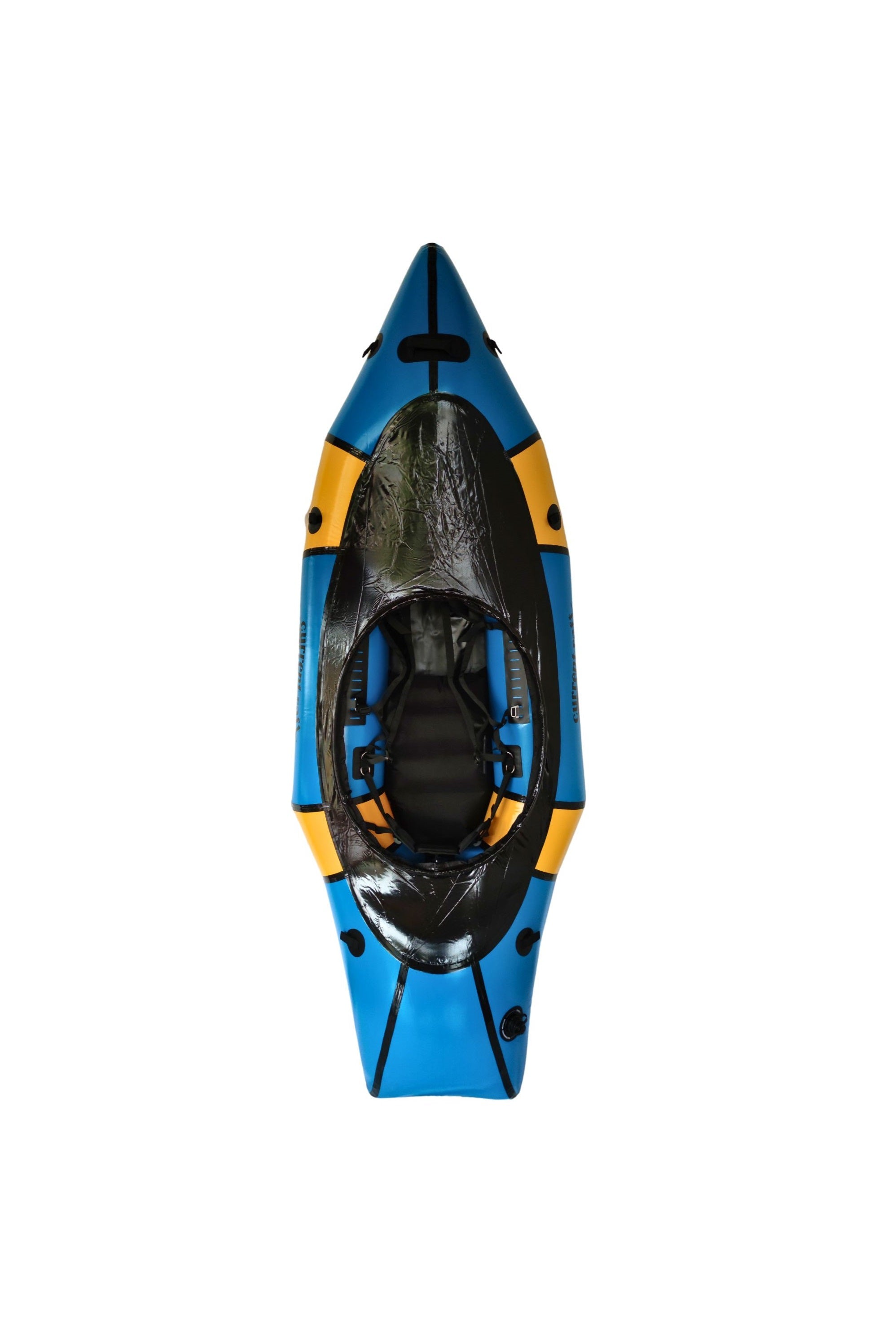
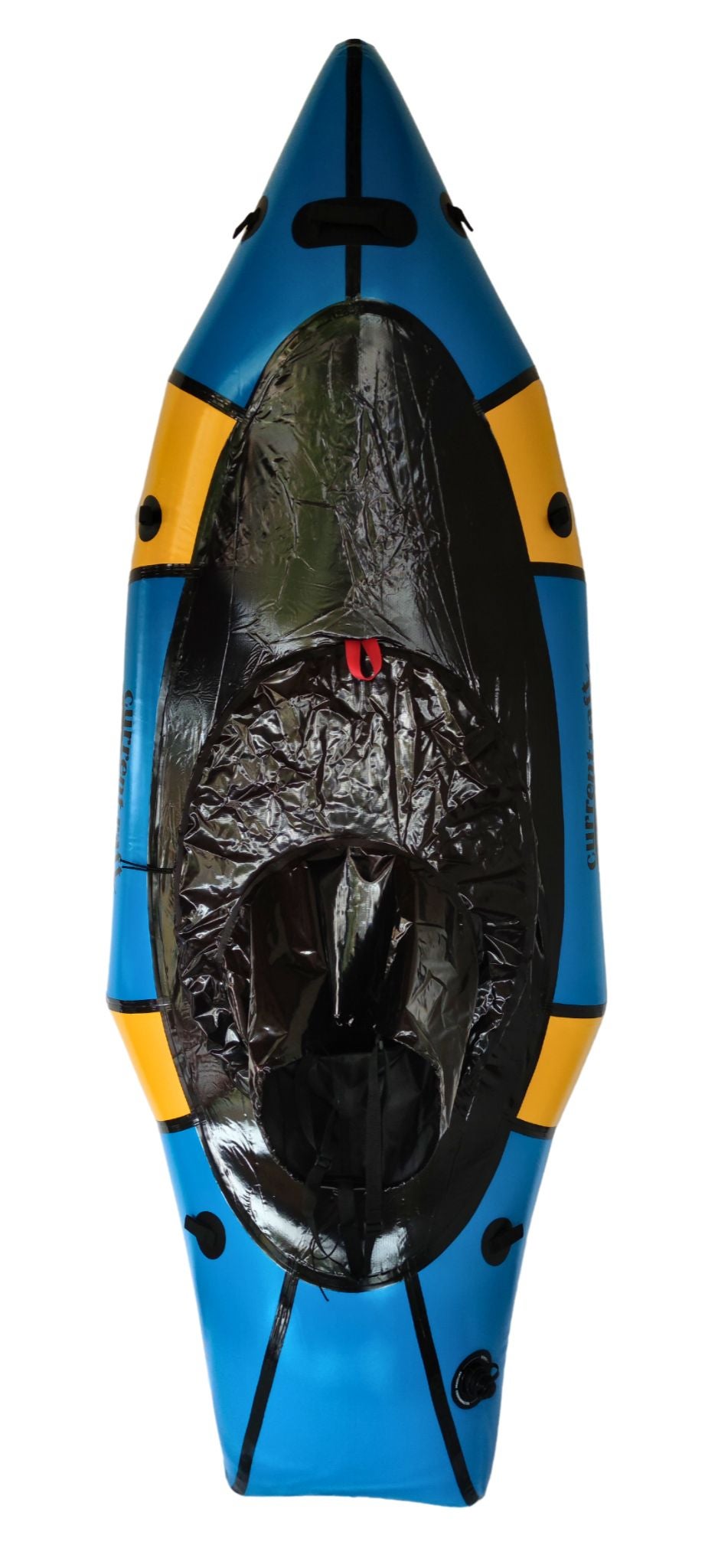
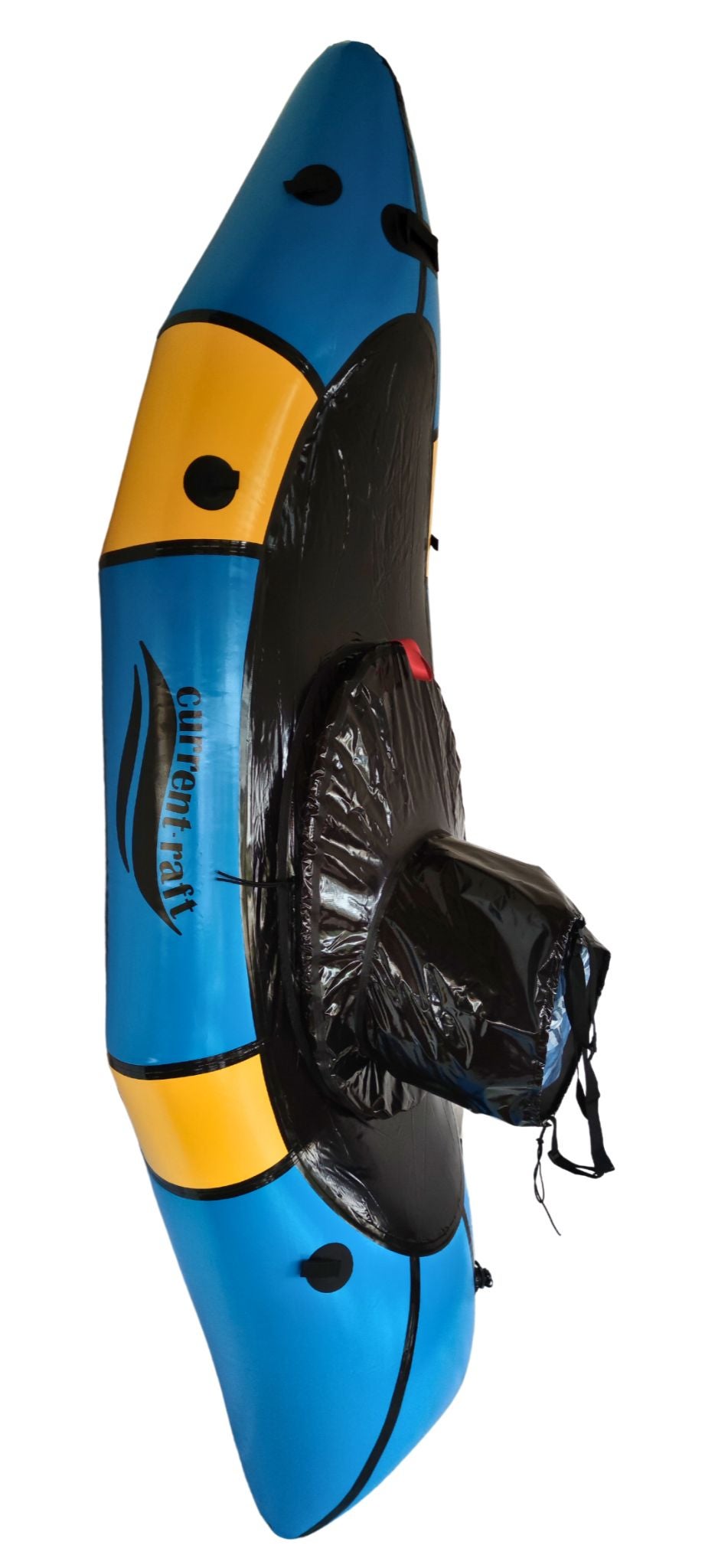
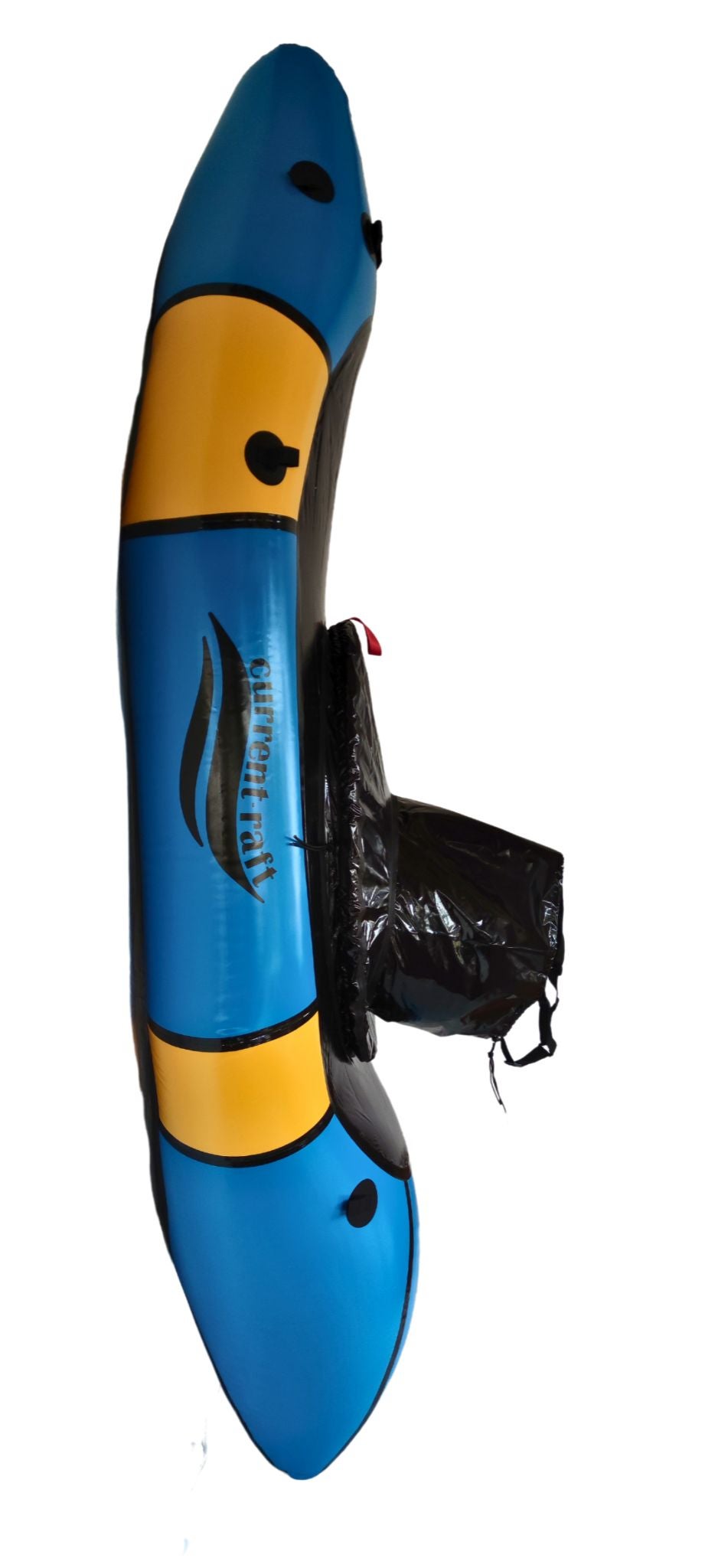
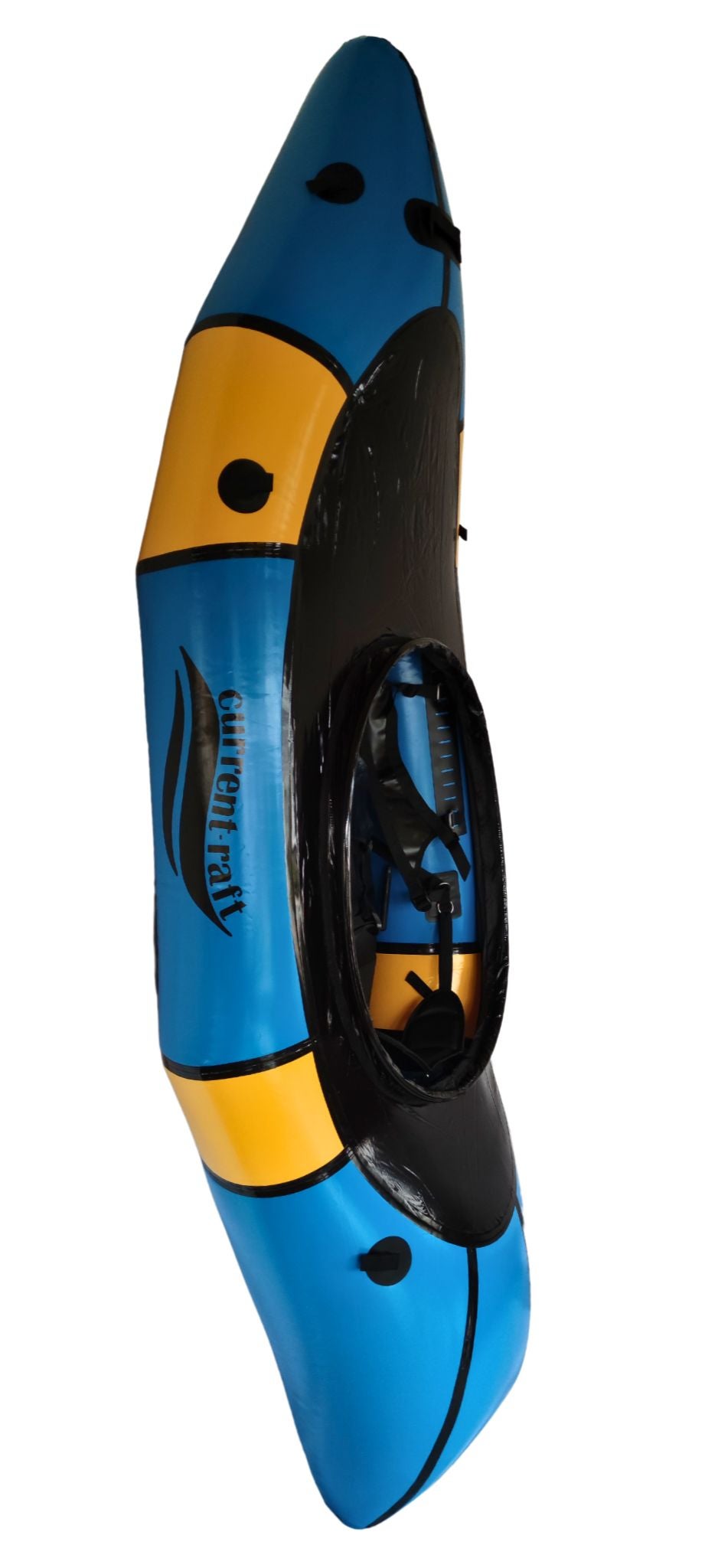

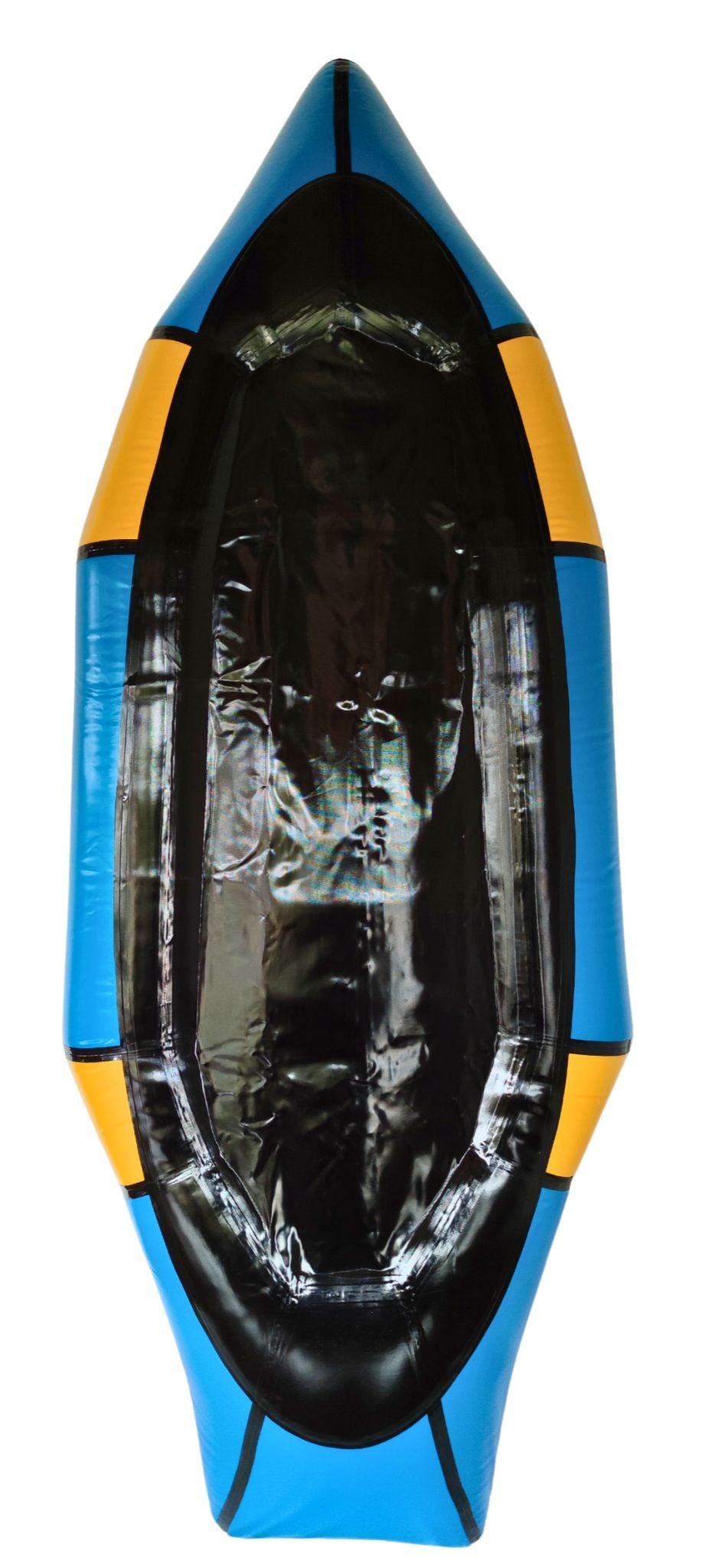

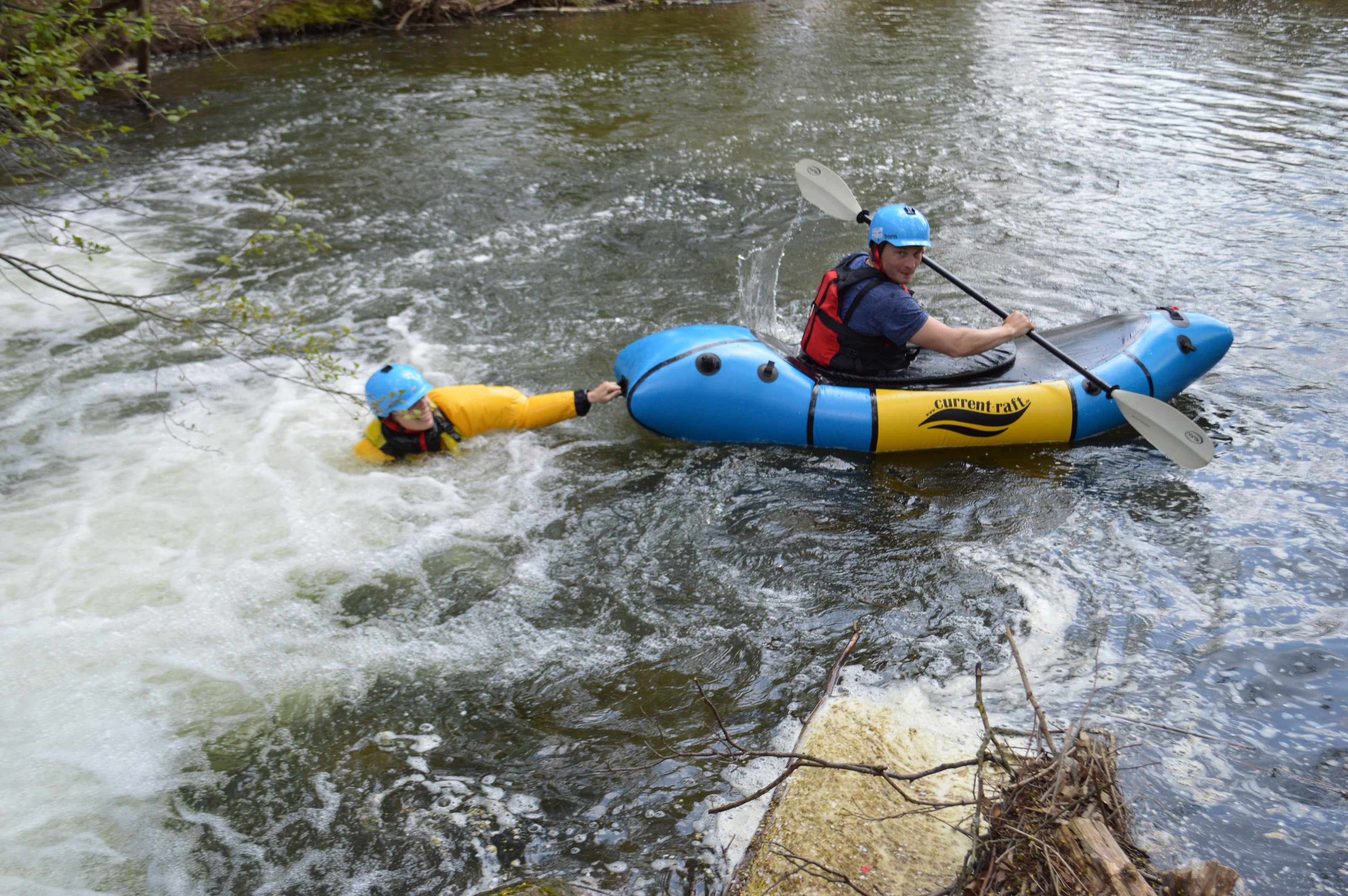
Description
Are you at home in medium to difficult whitewater and do you enjoy spending time at play areas or even paddling in the surf? Do you love the feeling of the water beneath you on the (standing) wave and are you always looking for new spots? Then our Current-Raft Rodeo should be the packraft of your choice.
Product information
The Rodeo model has been specially optimized by us for use on waves and is therefore the first packraft to be classified as a play boat. With extra volume in the tail and the adapted shape, it is easy to surf every wave. The packraft is very stable, but still very easy to turn and playful thanks to its rocker. Even turning and sliding backwards on the wave are no longer reserved for kayakers.
But that's not all, the Rodeo is also ideal for difficult whitewater (WW3/WW4).
The large rear volume close to the paddler makes it a reliable, stable companion that nothing can knock over so quickly, in the truest sense of the word. If there is a swimmer in the group, the handle attached to the stern offers the saving option of towing the fellow paddler into the safety of the backwater. The additional 50g of weight is a good investment for us at this point and the handle is also very useful in everyday use. With a weight of only 3700g, the packraft has extra robust materials in the tubes and base and comes as standard with full whitewater equipment. For paddlers with a leg length of less than 105cm, we also recommend a footbrace (190g).
Dimensions
-
External length: 255cm or 275cm
-
Inner length: 118cm or 138cm
-
External width: 94cm
-
Inner width: 38cm
-
Hose diameter: 28cm
-
Load capacity: 170kg/180kg
-
Pack size (approx.): 26l/29l
-
Hatch size: 45cm x 83cm (255cm)/ 45cm x 90cm (275cm)
Weights (sorted by length)
- Packraft 420D hoses/840D base: 3400g/3850g (including coaming, fasteners, valve)
- Backrest: 105g
- Thigh straps (aluminum fasteners): 250g
- Fit: 290g
- Spraying apron: 320g
- Bubble bag: 140g
- Carry bag (optional): 300g
- Fin (optional): 130g
- Footbrace (optional): 190g
-
Bow bag 40l (optional): 450g
Materials
- Tube material: 420D TPU nylon (0.45mm) with urethane coating
- Bottom material: 840D TPU nylon (0.65mm) with urethane coating
- Seams: 840D TPU nylon
- Valve: double function, check valve made of PVC
Attachment points
- Handle at the stern
- Handle on the bow
- 4 fastening loops at the rear
- 4 fastening loops on the bow
- Brackets for thigh straps and backrest are pre-installed
Scope of delivery
- Packraft
- Bubble bag
- Seat
- Backrest
- Thigh straps
- Coaming
- Spray apron
- Repair patches
What length do I need?
The decisive factor for the correct packraft length should be the length of the paddler's legs. This is best measured while sitting. To do this, sit on the floor against a wall in a comfortable paddling position and measure the distance from your tailbone to your heel. Remember that clothing and paddling shoes affect your measurement by a few centimeters, or measure directly in paddling clothing. For good contact and control over your packraft in the water, you should fill the interior length as much as possible. This is particularly important in whitewater in order to be able to exploit the full potential of the whitewater packraft models. For smaller paddlers with a leg length of less than 105cm, we therefore recommend an additional footbrace.
Of course, the possibility of extra storage space in the bow can also lead to a decision for a longer packraft.
We are happy to advise you on this at any time!
Product information
- We recommend
Safety instructions
- Non-swimmers do not belong in a packraft. Anyone who takes non-swimmers out on the water carries a high risk.
- If possible, do not paddle alone. Always leave where and until when you plan to travel.
- Take water sports and safety courses with certified trainers.
- Inquire about the dangers of the water - water levels, ebb and flow, currents, weirs and weather conditions. We strongly advise against driving during floods.
- Avoid weirs, power stations and dams of all kinds. There is often a danger to life here, so it is recommended to carry them over a wide area.
- Take first aid and rescue equipment with you on the water.
- Wear clothing appropriate for the weather. Cold weather and water can cause hypothermia.
- Assess your ability correctly and plan tours according to the weakest group member.
- Keep your distance from other water users, especially all motor ships and sailing vessels. Packrafts almost always have to give way and are difficult to see by the skipper.
- Observe the inland waterway and sea shipping regulations. They apply to all shipping lanes and canals and contain binding rules for all watercraft.
- Put on a life jacket or, on large bodies of water, a fainting-proof life jacket and head protection. When whitewater rafting, wear a cold-weather suit and a helmet.
- Particular dangers exist on white water and on the coast. These waters can only be navigated with special equipment and by experienced paddlers, ideally with expert guidance and local guidance.
- The emergency exit from the packraft should be practiced. We recommend practicing quick exits on land, in the pool or under supervision.
- In the event of additional modifications to the packraft, getting in and out must not be impaired.
- Getting back on the water should be mastered safely before navigating open water or white water.